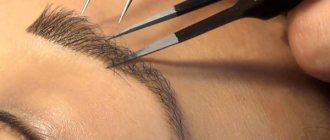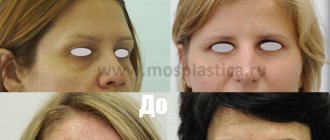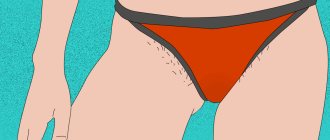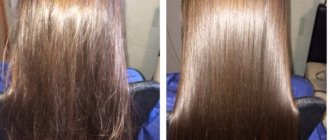Hair loss, partial or total baldness occurs for various reasons and always brings a lot of inconvenience. Hair implantation (transplant) is one of the few solutions to the problem of baldness, since it is often impossible to get your hair back.
To make a decision about carrying out a transplant procedure, you need to know what it is, how it is carried out, and what features it has. The hair transplant procedure can lead to complications, which you need to know about in advance. Also, after implantation, special hair care is required.
…
Implants – what are they?
The procedure uses fibers of artificial origin that have been tested over a long period. These are hair implants. They are made from biosynthetic polymers that have undergone strict testing.
Biologically compatible analogues like natural hair. They are elastic, different in hardness, have a wide range of shades (21), fiber length is 15-45 cm. By the way, if the shades are mixed so that the color range of the hair is closer to natural.
For more than twenty years, biocompatible fibers have been used in the European Pharmacopoeia. They tolerate mechanical and chemical stress well and have antibacterial properties. Externally, implanted hair is similar to natural hair. They can also be washed, rolled in curlers, or dried with hot air from a hair dryer.
What is the difference between implantation and transplantation?
1. Transplantation is an operation when one’s own material with a follicle is transplanted onto an area without hair (in whole or in part). There are two types of solutions to the problem.
- Patchwork, during which micro material is transplanted into small areas. Excision is performed under a microscope;
- Seamless. Hair follicles are cut with a device without cutting the skin. The method eliminates alopecia in small areas.
After the procedure, within a couple of months the hair begins to grow. After the transplant, the full result will be visible in about a year. Hair completely retains its natural color, structure, and growth rate. For transplantation, material is taken from the back of the head.
Transplantation is not performed for people suffering from diabetes, who have a reduced blood clotting response, or have skin diseases.
2. Implantation is a transplantation of biologically compatible hair. Biofibre implantation is the only technology in the world that has undergone numerous trials over a long period. This option can be used even with complete androgen-induced baldness, which cannot be done with transplantation.
The threads are secured with a hook equipped with a keratin capsule. This helps the hair to take root, so the immune system does not reject it as a foreign body.
Preparatory procedures
Whatever method is chosen, before performing the operation you should:
- Stop smoking and drinking alcohol (at least a month before surgery).
- Apply Minoxidil to the skin (start 3-4 months before surgery, stop 2 weeks).
- Get tested for infectious diseases and check blood clotting.
- The day before surgery, the hair at the donor site is shortened to 3 mm .
Implantation technology
This is a fairly expensive procedure that involves the cost of caring for artificial hair. Of course, there are no guarantees that the result will make the person completely happy, but it will still relieve baldness.
Biofiber is completely similar to natural human hair. Its excellent survival rate is ensured by the keratin tip. Among 21 hair shades, the patient can choose any color he likes; required length; degree of smoothness. Implantation is a long operation (five to six hours), which is performed in specialized clinics. Local anesthesia is used for pain relief.
Before undergoing this operation, a trial procedure is carried out two weeks before. They implant a small piece of artificial hair and observe how the immune system reacts. If all is well, then you can start transplanting.
Depending on the device, 600-4,000 artificial threads can be implanted in one operation for partial baldness, and up to 8,000 for complete alopecia. Usually, the implantation of biocompatible hair occurs in several stages with breaks of 2-3 weeks. There is no need to stay in the hospital; outpatient treatment is sufficient.
Problems that arise after hair implantation
This is an expensive procedure and time-consuming, so you need to familiarize yourself in advance with what problems may arise during hair implantation. There are several main problems:
- After the procedure, the areas of the head with implanted hair may be affected by pathogenic bacteria, as they become too sensitive. Natural hair follicles are equipped with a unique mechanism that can protect the scalp.
- Artificial threads are attached through the skin layer to the hair roots, which are located in the dermis. During implantation, there is no mechanism that could prevent the microflora of the scalp from entering the dermis, damaging it. Therefore, people with hair implants may often encounter skin bacteria.
- Biocompatible fibers are foreign bodies that the human immune system will automatically fight. This is how nature works. Therefore, after implantation, it begins its struggle to get rid of the foreign body and the implanted hair begins to gradually fall out.
- If this happens, scars may form due to inflammatory processes, which will then have to be removed surgically. Scars are dangerous because they deeply affect the hair follicles, and after that the hair will never be able to grow.
Who should not undergo implantation?
Despite all its advantages, hair implantation is not a natural method of hair restoration. Like any surgical intervention, this procedure has a number of contraindications, so not everyone does it.
In what cases is artificial hair implantation not performed?
- If the trial transplantation of artificial threads was negative due to rejection by the immune system, then the patient will be denied further procedures. What's the point of wasting money, and a lot of it, if the implants fall out. Although such people make up only 1%. They may also experience other reactions when rejecting a foreign body.
- If the patient suffers from hyperhidrosis. The reason is that artificial fibers can cause increased sweating.
- If the patient suffers from infectious skin diseases: dermatosis, dermatitis, he has severe allergic skin reactions. Reason: organic hair can irritate the skin due to poor breathability of the scalp and impaired fat metabolism.
- Contraindications also apply to patients who are pathologically dissatisfied with their appearance, i.e. suffering from dysmorphophobia. In a nervous state, they can pull out the hair implanted in them.
Who needs it
Scalp hair transplantation is necessary for both men and, in rare cases, women when they experience baldness. Hair loss is most often caused by a biological process called alopecia. It is controlled by the hormone dihydrotestosterone. It works opposite to testosterone, which is responsible for the growth of healthy and thick hair. When dihydrotestosterone is released abundantly, the hair on the crown and scalp of the face becomes thin and brittle. And the hormone does not allow new ones to grow. As a result, the hair is left with a light fluff. The process of baldness can last from several months to several years.
Men first encounter this at the age of 30-40 years. Although some people notice hair loss at an earlier age. Most often this is due to a genetic predisposition, which is transmitted to men mostly through the female line.
A good time for a transplant operation is the initial stages of baldness.
Hair loss can also be caused by:
- Nervous tension, breakdowns. Stress kills follicles. Therefore, with strong nervous tension, hair may begin to fall out from the frontal and parietal parts of the head.
- Chemical irradiation in the treatment of tumors. Chemical radiation is directed deep into the body. Passing through the skin, it burns the hair roots.
- Burns. High temperature damages the skin. Burns above the first degree destroy the deep layers of the epidermis in which the hair roots lie.
Biofibre hair implantation: disadvantages of the method
Although artificial fibers are close to natural hair, they can be rejected by the human immune system at any time and fall out. This may lead to another replanting and waste of money. And if a lot of threads have fallen out, then there will be several transplants. They will be held with significant interruptions.
After implantation of artificial hair, the glands that produce fat and sweat begin to function more actively. This also entails washing your hair every day, and the skin may become infected with fungus, itching and inflammatory areas will appear.
It is forbidden to dry implanted hair with hot air, straighten curls with curling irons, dye them with dyes containing ammonia, or perm them.
Complications
In many countries of the world (USA, some EU countries) hair implantation was prohibited due to the large number of complications. The main problem is the rejection of synthetic material, which is perceived by the body as foreign; according to some data, up to 25% of fibers are rejected per year. Another problem is chronic inflammatory reactions around the area of fiber embedded in the skin.
However, the company that manufactures BIOFIBRE 0373/TGA claims that with strict maintenance requirements, many problems can be avoided. Also, in order to reduce the percentage of immunological reactions, threads with keratin capsules around the hook began to be produced.
Implantation in eyelashes and eyebrows
Women often don't like their eyelashes or eyebrows. They would like to have thicker and longer eyelashes, and more expressive eyebrows. You can, of course, paint them daily with special mascara, you can build them up, but the ideal thing is to implant them into eyelashes and eyebrows to improve their appearance.
Benefits of eyebrow and eyelash hair transplant:
- The outpatient procedure is one-time and does not last long, only a couple of hours. Unlike eyelash extensions, this method is more durable;
- There will be no traces left either in the area of selection of material for transplantation or in the area of the eyelids;
- Minimally invasive. Painless, as local anesthesia is used;
- Rehabilitation up to five days;
- Implanted eyelashes and eyebrows look natural and grow in the right direction;
- They can be painted with mascara, and the eyelashes can be curled.
If the outpatient procedure was performed in compliance with all the rules, then new eyebrows or eyelashes will delight you for the rest of your life. Implanted eyelashes and eyebrows do not fall out.
Transplant methods
Today, two methods of transplantation are officially recognized: patchwork and seamless. The operation belongs to the category of minimally invasive surgery, as it does not affect deep tissues and organs.
Patchwork method
An outdated but cheaper method is FUT (Follicular Unit Transplantation). Also known as the strip, surgical or patchwork method. The name reflects the technique: during the operation, microincisions are made to remove a fragment of skin, then a cosmetic suture is applied. The operation is carried out in 3 stages:
Extract:
- the hair on the back of the patient's head is shaved off;
- local anesthesia is administered;
- a thin flap of skin is cut out in the donor area using a microscalpel;
- A cosmetic microsuture is applied to the wound.
Preparation:
- the skin fragment is delivered to the laboratory;
- a team of nurses disassembles the flap into microtransplants (grafts), of which about 5 thousand are needed for one operation;
- in the recipient area, channels for implantation with a depth of 0.6 mm and a diameter of 6-7 microns are pierced.
Styling:
- grafts are transplanted into the recipient zone one at a time;
- the area is disinfected;
- A tight bandage is applied to the surgical suture.
The effect is visible within a few weeks. The transplanted hair grows. If there are no complications, then they will never fall out.
Seamless method
FUE (Follicular Unit Extraction, extraction of follicular groups) – also seamless. This method does not require any incisions. The ready-made graft is removed from the donor area using a microsurgical instrument - punch (from the English punch - to hit). The punch has the shape of a hollow tube with a beveled end. It is implanted into the prepared canal using microtweezers or an implanter.
It is carried out in 3 stages:
Extract:
- the hair on the back of the patient's head is shaved off;
- local anesthesia is administered;
- Hair groups are “drilled out” from the donor area one by one.
Preparation:
- after extraction, the material is sorted, damaged follicles are removed;
- The skin on the scalp or face is pierced with a microneedle to create channels for new hair.
Laying:
- follicles are placed one at a time into the canal, laid in a checkerboard pattern;
- the face is disinfected.
HFE (Hand Follicle Extraction) variety:
- Grafts are manually removed from the donor area;
- the surgeon works with microtweezers;
- slow pace - up to 1000 grafts per day, therefore it is used only when the volume of work is less than 1500 grafts.
The advantages of the latter method are minimal trauma and the fact that you do not have to shave your head.
Comparison of two transplant methods
| FUT (patchwork method) | FUE (seamless method) | |
| Clinic | Wide profile | Narrow profile |
| Medical staff | 5-14 people | 4-6 people |
| Price per graft | From 50 rub. | From 80 rub. |
| Where do donor material come from? | Only from the back of the head | From all over the body |
| How to take the material | cut out | They pull out |
| Anesthesia | Yes | Yes |
| Implantation depth | 0.6 mm | 0.6 mm |
| Scar | Yes | No |
| Time | 3-4 hours | 7-8 hours |
| Position | Sitting | Lying down, then sitting |
| Hair Density | 30-50 per cm2 | 50-60 per cm2 |
| Survival rate | 99% | 97% |
| Run again | Up to three times | No limits |
| Hairstyle | From 2 cm to hide the scar | Any |
The cost of the operation consists of:
- area of baldness;
- number of grafts;
- method.
The price does not include consultations with specialists.
Prices in a specialized clinic in Moscow:
- diagnostics by a trichologist costs 1.5 thousand rubles;
- for a transplant surgeon – 2 thousand rubles;
- for a makeup artist to determine the hairline on the face - 3 thousand rubles;
- transplantation on the face in the area of the beard, sideburns and eyebrows - from 150 thousand rubles;
- to the top of the head - from 180 thousand rubles.
How to properly care for hair after implantation?
Artificial hair requires care. Only a month after the implantation, the hair will be able to finally take hold.
During this entire period, the following rules must be observed:
- Do not overheat in a bathhouse, solarium, or in the sun;
- Lubricate the skin strictly with the products prescribed by the doctor;
- Abstain from alcohol and smoking;
- It is not recommended to take thinning medications.
Once the implanted hair has taken root well, other rules must be followed, i.e. for artificial hair care.
- To wash your hair, use antiseborrheic, ph-neutral shampoos without alcohol, so as not to dry it out.
- Clean with special products for cleaning the scalp. Clean after two to three days.
- If you really want to dye your hair, then the dye should not contain ammonia. Do not dye your hair white.
- To dry your hair after washing your hair, use only warm air, not hot air. Thermal rollers for curling curls - no more than 40 degrees.
- Use hairspray to style your hair. It is allowed to use balms to soften hair so that it is easy to comb.
- The headdress should be loose and not injure.
- For combing, buy wooden or plastic combs.
- Visit your doctor regularly for consultations.
We preserve the donor area during collection
We never take two adjacent units. Be sure to leave a ring of hair around the sampling point. This technique ensures healing without traces and reliably masks the donor areas on the back of the head.
Expert comment:
“If you take grafts continuously (and this is of course easier), restoration of the donor area will be problematic.
After healing, visible scars form on the head, which will not allow you to wear a short haircut in the future.
In our case, only points will remain that are not noticeable even with half a centimeter hair length.”
Mamontova Tatyana, transplant surgeon.










